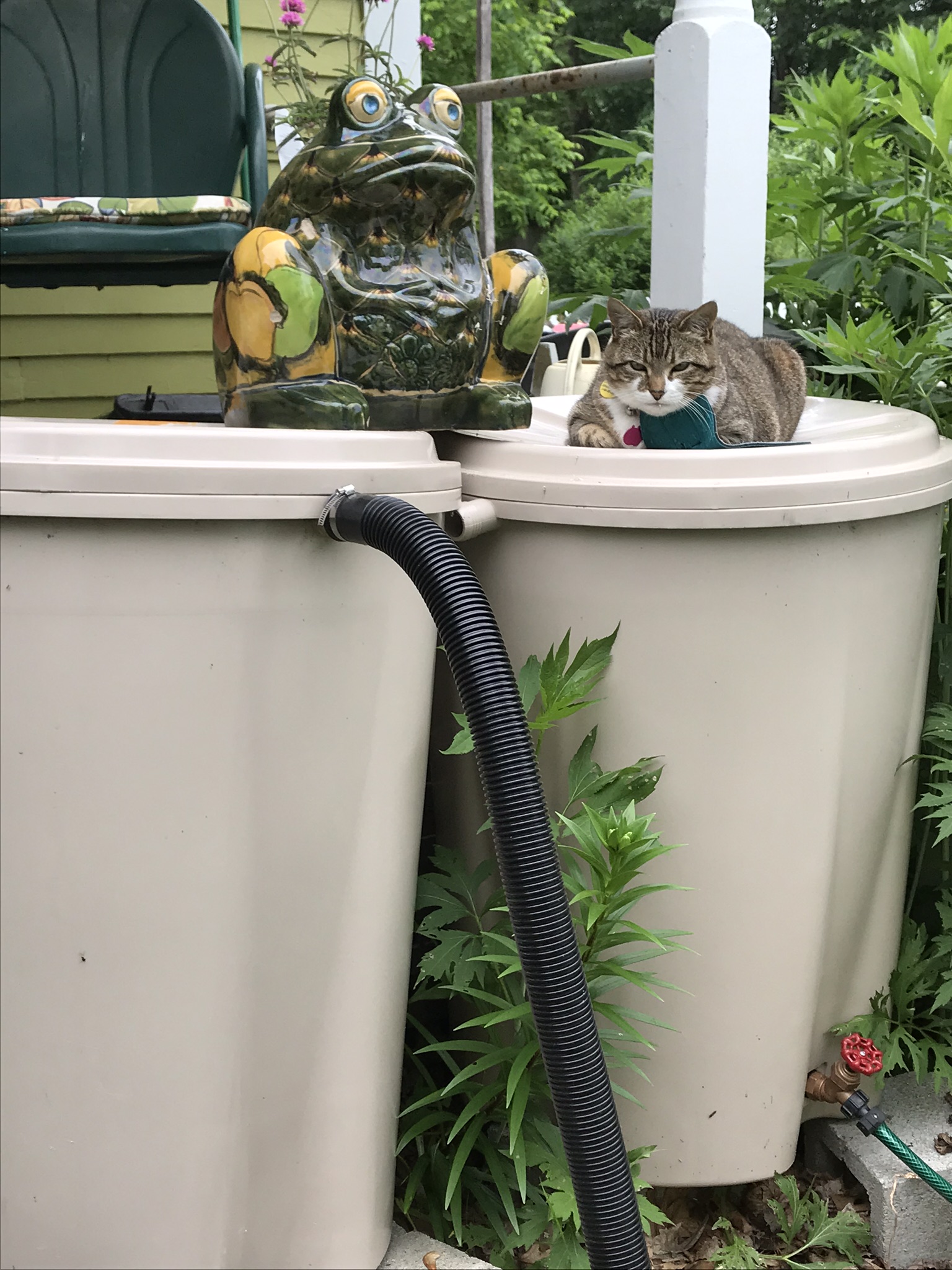Oh boy, no rain again today…
“Wait Mommy, I’ll turn on the rain for you!” my young daughter said as she ran to one of the rain-barrels along the dripline of our roof years ago.
“In 2012, the top 1 percent of rainfall events in the northeast carried 71 percent more rain than the most intense events did back in 1958.” The infrequent, much more intense, short rains we are experiencing now are wreaking havoc with gardeners as well as communities. “As the climate warms, air can hold more moisture,” Rajkovich says. “That’s just a scientific law.”
But water is a precious resource, not only more scarce but correspondingly more expensive. Rain-barrels offer double or triple duty benefits to homeowners willing to do some figuring. And jeez, rainwater is free!
The Ecology Center of Normal IL states that “Collecting rainwater for use during dry months in rain barrels or other depositories is an ancient and traditional practice. Historical records show that rainwater was collected in simple clay containers as far back as 2,000 years ago in Thailand…” And luckily this activity is legal in New Hampshire. The same cannot be said for all of our US states.
What’s now called “rainwater harvesting” not only saves the use of expensive, purified water, but it can also collectively reduce community stormwater flooding when many households participate by storing and delaying the release of rain during significant storm events. The beauty and challenge is that each homeowner can participate as they see fit. The Natural Resources Defense Council states that “Our analysis shows that solutions to one of America’s biggest urban challenges are right in front of us – in this case, literally falling from the sky,” said Noah Garrison, lead author of the report and NRDC water policy analyst. “The potential exists for cities throughout the U.S. to capture hundreds of millions or even billions of gallons of rainwater each year from…rooftops.”
How To? You can install a shielded rain gutter only on the side of your home that is adjacent to decorative gardens. Another less costly and more creative method is to strategically place a gutter on top of and between at least two rain-barrels along one of your home’s roof’s drip lines adjacent to shrub and tree plantings or convenient for car washing.
Now there are a bevy of considerations such as:
* Convenient proximity to a non-food garden,
* Screening to prevent mosquito breeding and small animal drownings.
* An opaque barrel to prevent algae growth,
* Strategic provisions for overflow and
* A willingness to empty and store or overturn the rain-barrel for winter.
There are also many options for acquiring the actual rain-barrel from lovely and expensive versions to a blue, 55-gallon, BPA-free and food grade barrel from a local business. Several barrels can be linked together depending on the size of your “roof catchment area”. That said:
* Caution must be taken to site the barrel/s on a stable, level surface as they weigh approximately 450 pounds when full.
* Preferably they are raised (safely, remember the weight) to be able to access the barrel’s spigot with a hose. See the footnote sources for additional information.
You too can plan for and take advantage of our increasingly infrequent, short, more intense rains in the Northeast for several benefits by having your rain-barrels ready to catch and store this valuable resource, like money falling from the sky.
We Can Choose To Make a Difference Every Day.
HHH TIP: If you do only one thing, try one rain barrel. Create a level base where two roofs meet and catch this water for a season as an experiment. See what you think!

